Lead Scraping: Tools, Techniques, and Best Practices
News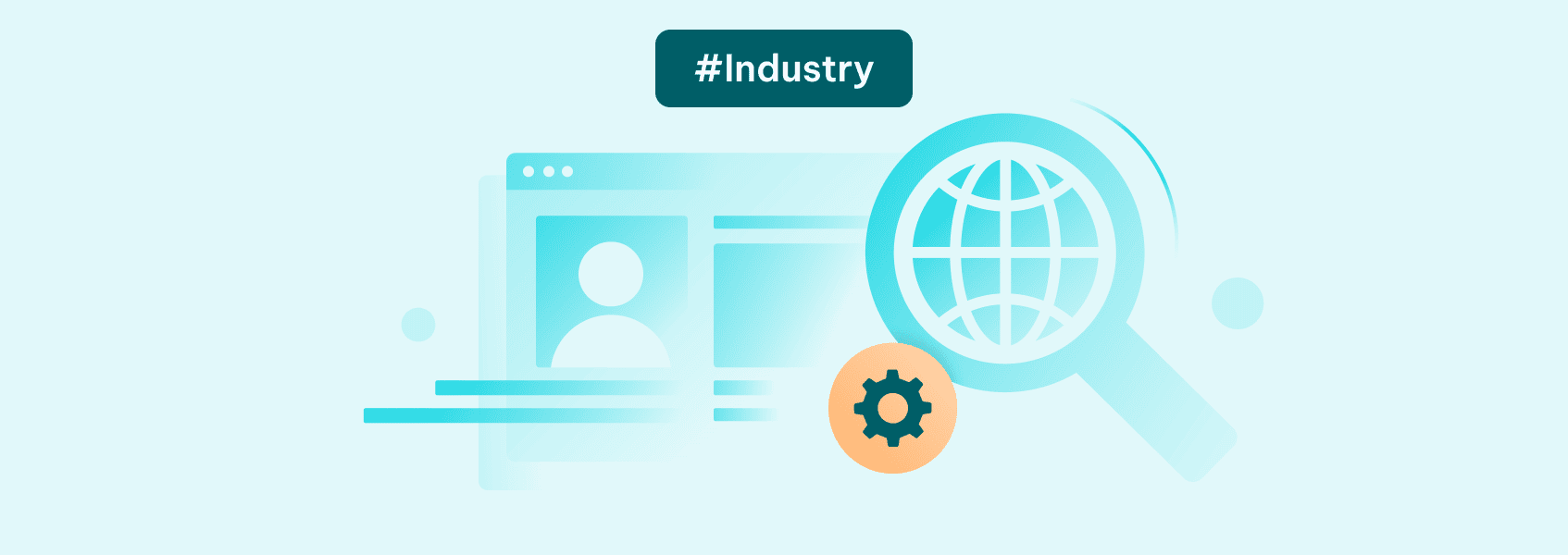

Justas Palekas
Many modern businesses rely on data to make better predictions and maximize investments. Marketing and sales often require large datasets to familiarize themselves with consumer needs, analyze ad responsiveness, and drive more revenue. For example, there are over 3 billion Facebook users worldwide , and a successful marketing campaign could turn it into thousands of sales.
But getting consumer data is easier said than done. You will encounter websites that aim to limit information access. Other times, you will require residential proxies to bypass geographical restrictions. Lawful documents like the General Data Protection Regulation (GDPR) must always be followed to avoid any legal troubles.
In this article, we’ll explain how to use lead scraping to draw more attention and buyers to your brand.
What Is Lead Scraping?
Lead scraping is a branch of web scraping that focuses explicitly on collecting contact information from publicly available sources , such as databases and websites. Like web scraping, it’s an automated process that requires lead scraping tools for fast and accurate data extraction.
Lead scraping is not synonymous with lead generation. The latter uses other channels to attract potential buyers, like paid advertising, SEO, etc. On the other hand, lead scraping focuses on grabbing publicly available consumer data , often without consent. That’s why understanding the best web scraping practices is vital when lead scraping to ensure legal and ethical boundaries are respected.
How Does Lead Scraping Work?
Lead scraping is similar to other web scraping methods but focuses on extracting contact information. It involves four steps.
1. Selecting a target The first step is to identify the targeted information (postcodes, emails, etc.) and its source (profile sections, public databases, etc.).
2. Extracting data The second step is to grab the selected data using a lead scraping tool. Web scraping tools ensure data accuracy and make lead extraction much faster. The most common lead data sources are business directories like Yellow Pages and Google My Business data; social networks like Facebook, X, and LinkedIn; public databases like government records; business websites that publish contact details like About Us sections, blog posts with authorship, etc.
3. Cleaning data A good lead scraping tool will also clean extracted data. This involves removing duplicates and errors, adhering to a chosen data format , and data parsing to make it more understandable.
4. Storing data Lastly, the gathered information is stored locally or using cloud services according to data safety protocols.
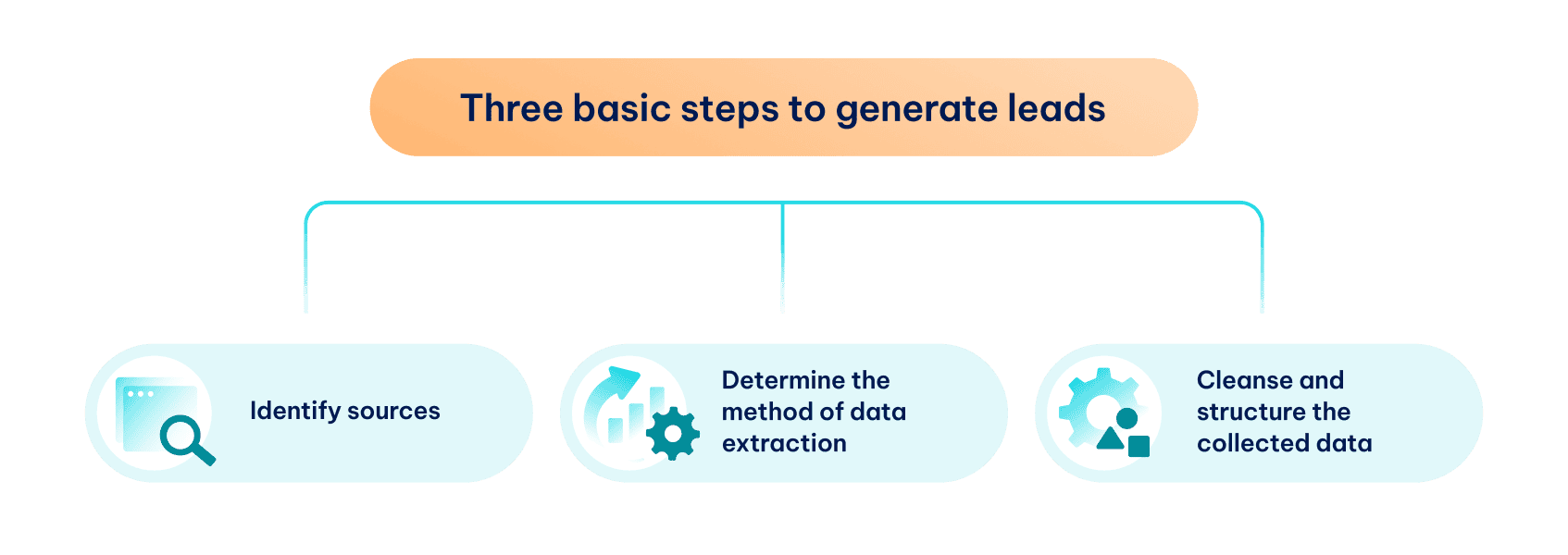
In this article, we’re focusing on the second data extraction step. A decade or so ago, web scraping required extensive programming knowledge to build a tool from scratch and then write HTML and CSS targeting algorithms. Currently, numerous no-code lead scraping tools bring this technology to broader consumer use.
These tools allow importing backlinks of websites that store required data. A user can simply point and click on the required elements, and the scraper will take care of identification and repeat data extraction from all selected sources. A lead scraper can extract information like this:
- Industry;
- Company;
- Website;
- Job title;
- Phone number;
- Name and surname;
- Email address;
- Social media profile;
- Interests.
Sometimes, businesses scrape leads that involve demographic data like age, gender, and location, but that is highly inadvisable. Unless your company explicitly requires such information, it’s best to refrain from collecting personally identifiable information (PII) , keep it at a minimum, and delete it right after you no longer need it. We also recommend going through GDPR data privacy requirements Articles 13 and 14, which elaborate on this topic.
Legal and Ethical Considerations
Because lead scraping handles contact information that frequently involves personally identifiable data, adhering to strict legal and ethical rules is paramount to avoid taking risks.
The first step should always be familiarizing yourself with the national and international laws. The GDPR governs online privacy protection in the European Union, but there’s also the Computer Fraud and Abuse Act and the California Consumer Privacy Act (CCPA) in the US. Violating these acts can irreversibly damage your brand, like the careless and illegal data mining during the Cambridge Analytica scandal that ended up in bankruptcy.
Adhering to the guidelines set in the Terms of Service and robots.txt documents is equally important in lead scraping. The robots.txt document informs the scraping party which parts of the website are accessible and which cannot be scraped. The ToS document often holds more detailed instructions on whether scraping leads is allowed.
Scraping copyrighted or intellectual property content is illegal. Websites and enterprises that identify the reuse of copyrighted material without consent defend themselves in costly lawsuits.
Techniques for Effective Lead Scraping
Identifying your target leads will maximize the benefits of lead scraping.
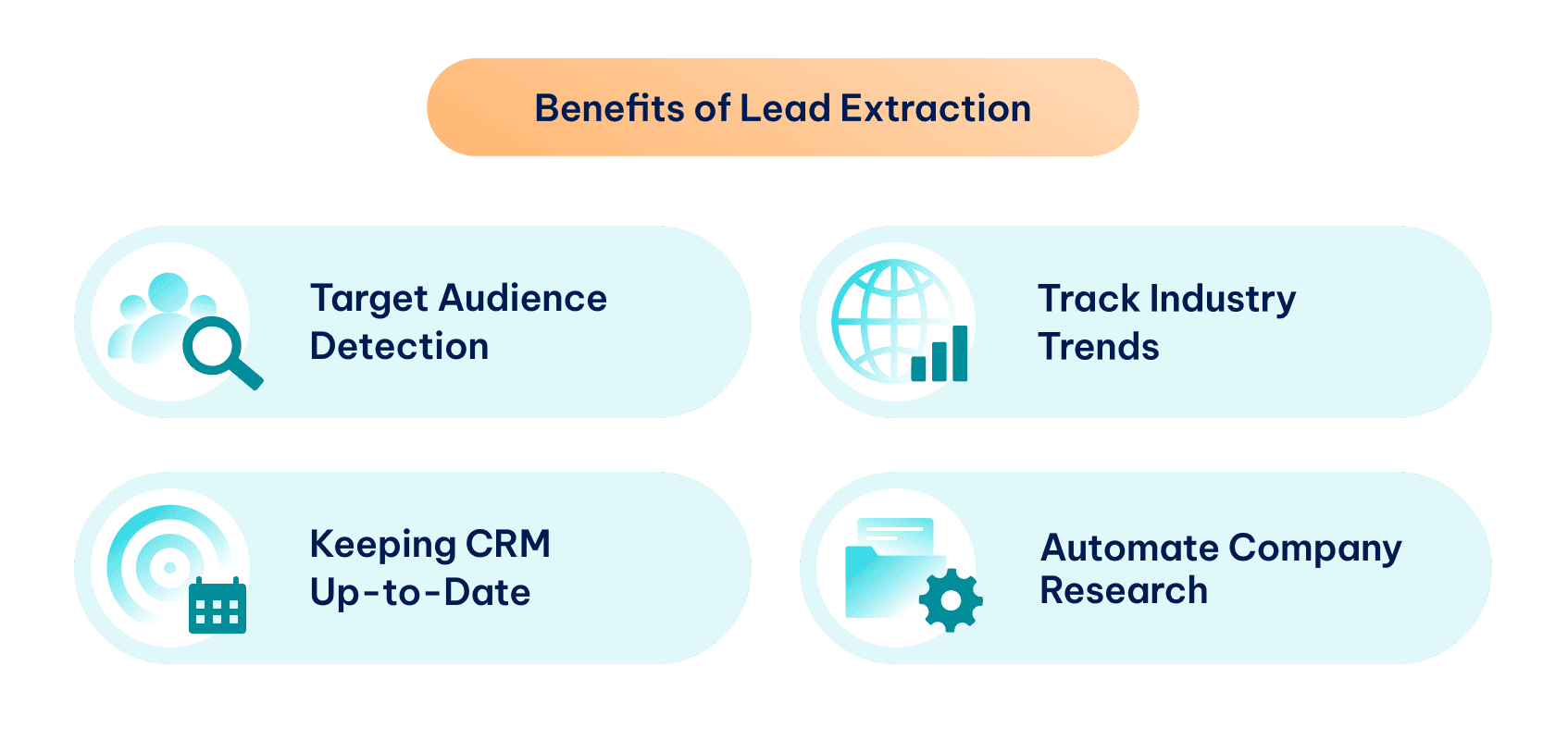
Personalized ads and services are particularly efficient in the current digital marketplace. Lead scraping tools let you get the data required for an engaging ad for one group of consumers and use a different strategy for others. Here are a few tips on how to scrape leads.
How to Identify Target Leads
Start your lead scraping process by collecting lead data that will help you familiarize yourself with future buyers or clients. This includes psychographic information like hobbies, lifestyle, and interests; industry-related details like work history, professional, company size, and salary range; and demographics like location and education.
Then, you can start working with online public data. For example, the Google My Businesses directories often have contact information available , which you can use to identify potential leads. LinkedIn is a goldmine of personal and company profiles, but lead scraping and lead generation on this platform should be done very cautiously, as the HiQ Labs vs. LinkedIn lawsuit illustrates.
You can also use lead generation software to simplify this process. For example, HubSpot and Venturz allow you to build a contact database, apply lead scoring, and automate workflows to improve conversion rates. Alternatively, the LinkedIn Sales Navigator is an invaluable tool for B2B professionals that offers industry news, statistical data like company size, and LinkedIn marketing tools.
Data Extraction Techniques
Gathering lead data manually is undoubtedly possible. However, with the abundance of online information and rapid changes in market trends, maintaining high levels of data accuracy manually is nearly impossible. The same applies to data extraction speed. What would take days, if not weeks, of repetitive labor for an employee, web scraping tools can achieve within an hour.
The easiest way to scrape leads is to use a no-code web scraping tool , like ParseHub, or a specific software like Hunter.io, a lead generation tool focused on collecting professional email addresses related to specific businesses or domains. These are automatic tools, which is one of the main benefits of lead scraping.
However, experienced programmers and data scientists can build their own web scraping solutions. They can utilize popular techniques like HTML parsing or use regular expressions to grab elements like company name, profession, skills, etc. More so, using tools like Puppeteer or Selenium allows simulating user behavior, which is essential for web scraping challenging websites or grabbing rendered content.
Tools and Technologies for Lead Scraping
Building a unique and customizable lead generation scraping tool is highly beneficial for big businesses but will likely cost too much for most small-to-medium enterprises. Instead, we recommend three reliable tools to scrape data without overpaying.
Scrapy
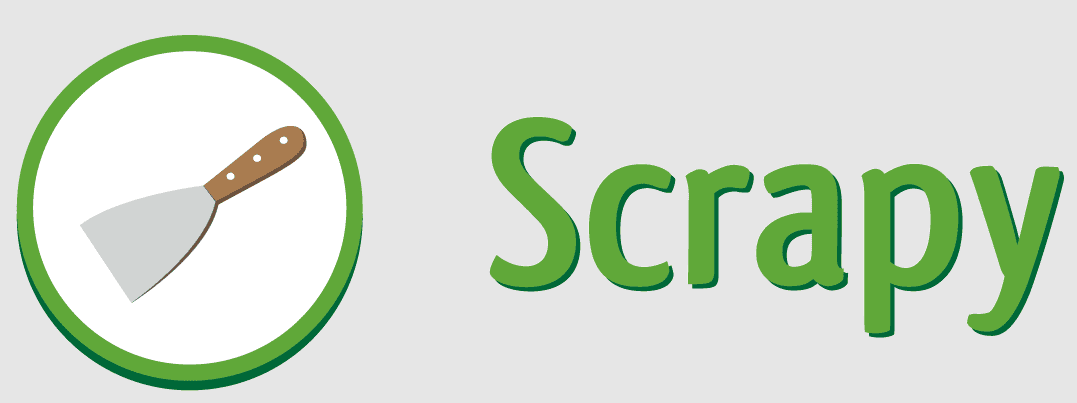
Scrapy is a Python-based web scraping tool that requires coding experience for the best results. That expands customization options to grab lead data from more complex sources. However, this tool is scalable and optimized for handling large sets of information. Scrapy also has abundant libraries and extensions to solve CAPTCHAs and works well with rotating proxy networks .
Scrapy’s features include a scheduler to queue up scraped URLs, a downloader for web pages, and a user-agent header manager. It uses XPath, regular expressions, and CSS selectors to target required elements. The tool is open-sourced so you can find an active online community for assistance.
Last but not least, Scrapy is entirely free. You only have to bring your knowledge, purchase additional tools, like proxy traffic, and begin your lead scraping process immediately.
ParseHub

Unlike Scrapy, ParseHub is a no-code tool, so you don’t have to know a programming language to use it. It’s an excellent choice for marketing specialists and human resource employees who often need to optimize the basic tasks of gathering and aggregating lead data.
ParseHub has a simple interface with a point-and-click design. Users can select required website elements by clicking them and export data in CSV, JSON, and XML formats compatible with most data analytics software. Although it is straightforward to use, it offers limited customization and cannot handle more complex websites with complete accuracy.
ParseHub offers a limited free version to try it out, but its real capabilities begin with the Standard plan, which costs $189/month.
Hunter.io

Hunter.io is not a web scraper but an all-in-one email outreach tool. Emails are still one of the most popular online communication methods, and Hunter.io offers features for businesses that focus on this channel.
Hunter.io provides an email search where you can target a specific domain for relevant email addresses. It also has email verification that minimizes the bounce rate and protects your sender’s reputation. The tool is beginner-friendly and integrates with Gmail and other popular email platforms, as well as CRM tools.
You can try Hunter.io for free with 25 monthly searches and 1 connected email account. The starter plan costs $34 per month for 6,000 searches and 12,000 email verifications , with the ability to add more in need.
Best Practices for Lead Scraping
As stated previously, lead generation scraping is a touchy subject, and not without a good reason. Web scraping, in general, is sometimes misused by unethical third parties looking for an uncompetitive advantage. Furthermore, the rapid expansion of social networks demands robust privacy protection laws to safeguard our online identities. Here’s a reminder of the best practices for lead scraping to avoid issues.
Maintaining Data Privacy
Violating online data privacy rules can result in expensive lawsuits and irreparable damage to your brand’s reputation. Once again, adhering to GDPR, CCPA, or similar data protection regulations is paramount, just as it is essential to follow instructions in the robots.txt and the Terms of Service documents.
Collecting personally identifiable information requires consent, especially if you don’t depersonalize it before downloading. If you store such information on your servers, it must be encrypted and protected against data leaks. You should gather only the required minimum of personal data and delete it whenever it’s no longer necessary.
Avoiding Common Pitfalls
There are a few shortcomings specific to web scraping.
Because this process involves retrieving data from servers, it puts additional strain on information holders. If your lead scraper is poorly optimized, it can send too many scraping requests, slowing down the server or even overloading it. What’s more, websites that use Cloudflare or similar CDN services have anti-bot protection so that they can mistake your scraping requests for a DDoS attack and block access. To avoid this, ensure that you limit web scraping requests without exceeding any limits.
Another issue is geographical restrictions. The internet is divided into regions with limited information access like numerous US websites inaccessible from the European Union due to different data retention laws. It also applies to governmental blocks, such as the Great Firewall of China or heavy censorship in Russia and Middle East countries.
A web scraping proxy is one of the best tools to bypass geographical restrictions . Because a proxy works as an intermediary between your device and web servers, you can select one in a different region. It will assign you a local IP address so that it looks like you’re browsing from there. This way you can maintain access to information that is blocked in your country of residence, thus expanding the scope of lead generation globally.
Continuous Improvement and Monitoring
Web scraping is a cat-and-mouse game. Many websites implement anti-scraping algorithms , although scraping the competitors themselves. In reality, businesses try to maintain a competitive advantage so they don’t feel like sharing industry-specific data. Simultaneously, enterprises like Amazon and Google are among the biggest web scrapers, and the tool is used by many other prominent brands worldwide.
That’s why continuously monitoring and improving your scraping technology is vital for data validity and longevity. Keep an eye out whenever new anti-scraping software appears to ensure your data is still accurate. Simultaneously, continuously monitor dynamic websites that often change their layout because it can intervene with data selectors, introducing gaps in your datasets.
Lead Scraping Use Cases
After you have prepared the right tools and legal considerations, you can begin scraping leads for business growth. Here are three widespread use cases to illustrate the benefits.
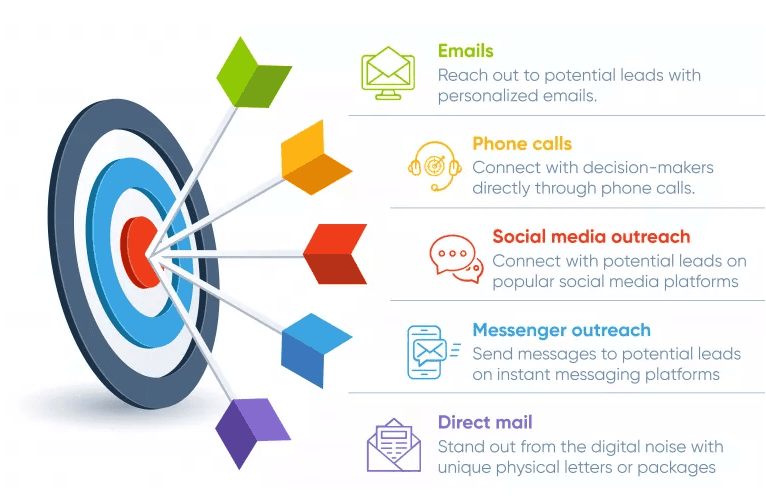
Email Marketing
Email marketing is still one of the biggest digital outreach channels and is predicted to remain relevant in the near future. For sending to those collected leads at scale, a bulk email sender can ensure your outreach is timely and reliable. Lead scraping is one of the best methods to get email contacts from websites and public databases. By now, marketing specialists understand that there are better strategies than spamming marketing emails. Instead, you can use data to create personalized emails to capture attention and then use email contacts for a profitable marketing campaign.
Sales
You can gather data about your future customers and create lists based on their profession, current workplace, career interests, etc. This way, you can establish a relationship before making a direct contact. Remember that you only have one chance to leave a good first impression, and introducing your brand in a carefully crafted and personalized way can significantly improve sales.
Networking
Over the last few years, networking has become a viral keyword. It means that you actively build new relations with partners, consumers, colleagues , and others in your business field. You can scrape leads to identify the brightest minds in your industry and reach out to them to discuss cooperation opportunities.
Conclusion
Web scraping is an exciting field that is now in its golden era. The benefits of data-driven decisions are apparent, so more and more companies are looking for ways to incorporate it into their development strategies. Lead scraping is a robust method to boost your growth by getting a massive amount of publicly available contact information. This way, you can reach hundreds of thousands of consumers after you have finalized a suitable marketing strategy.
